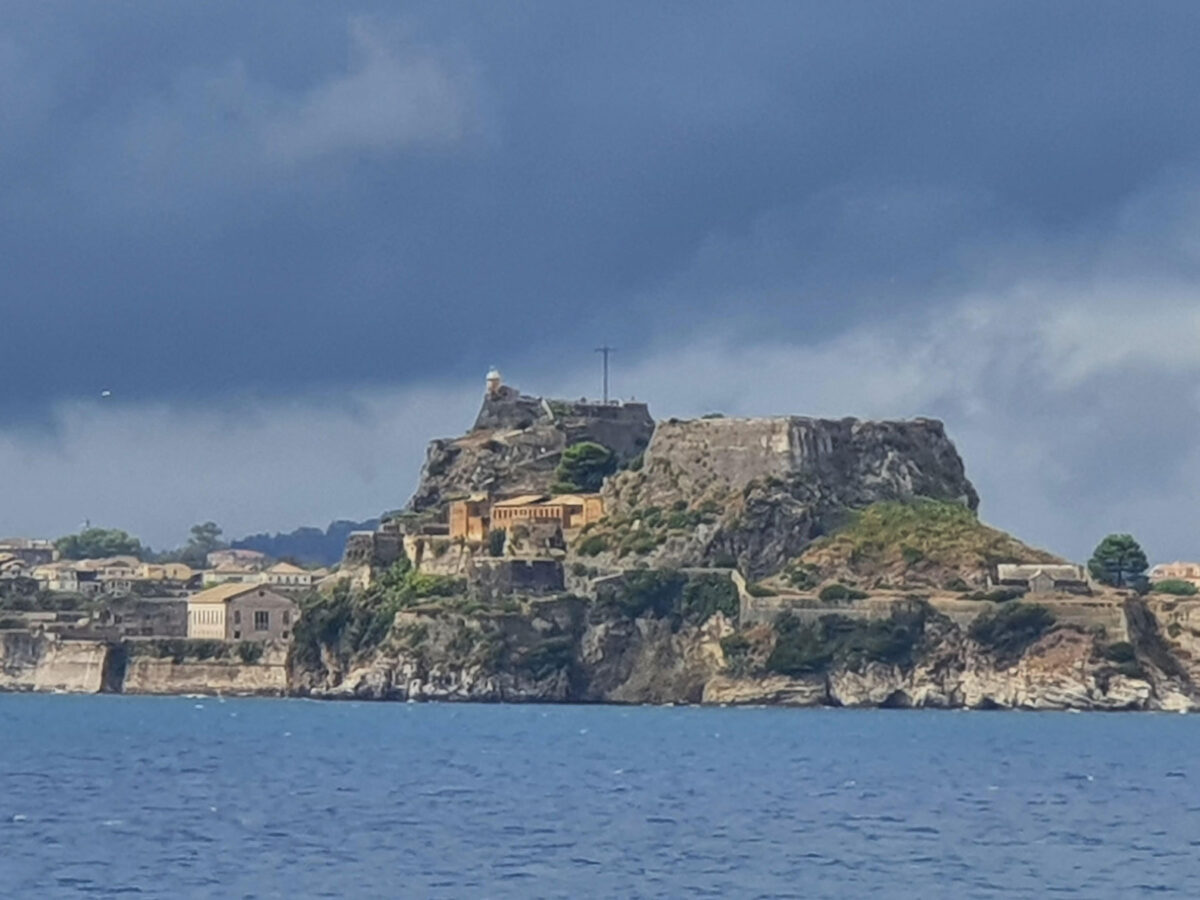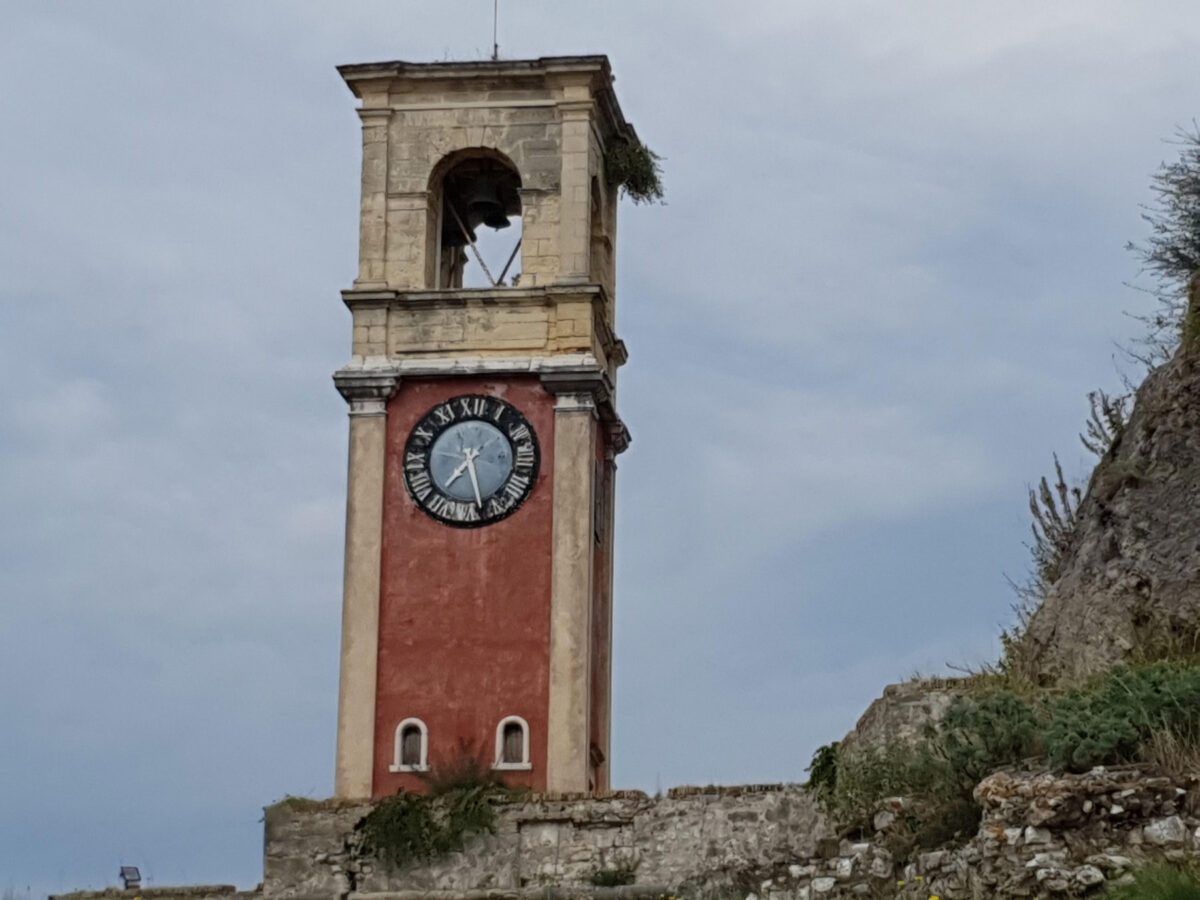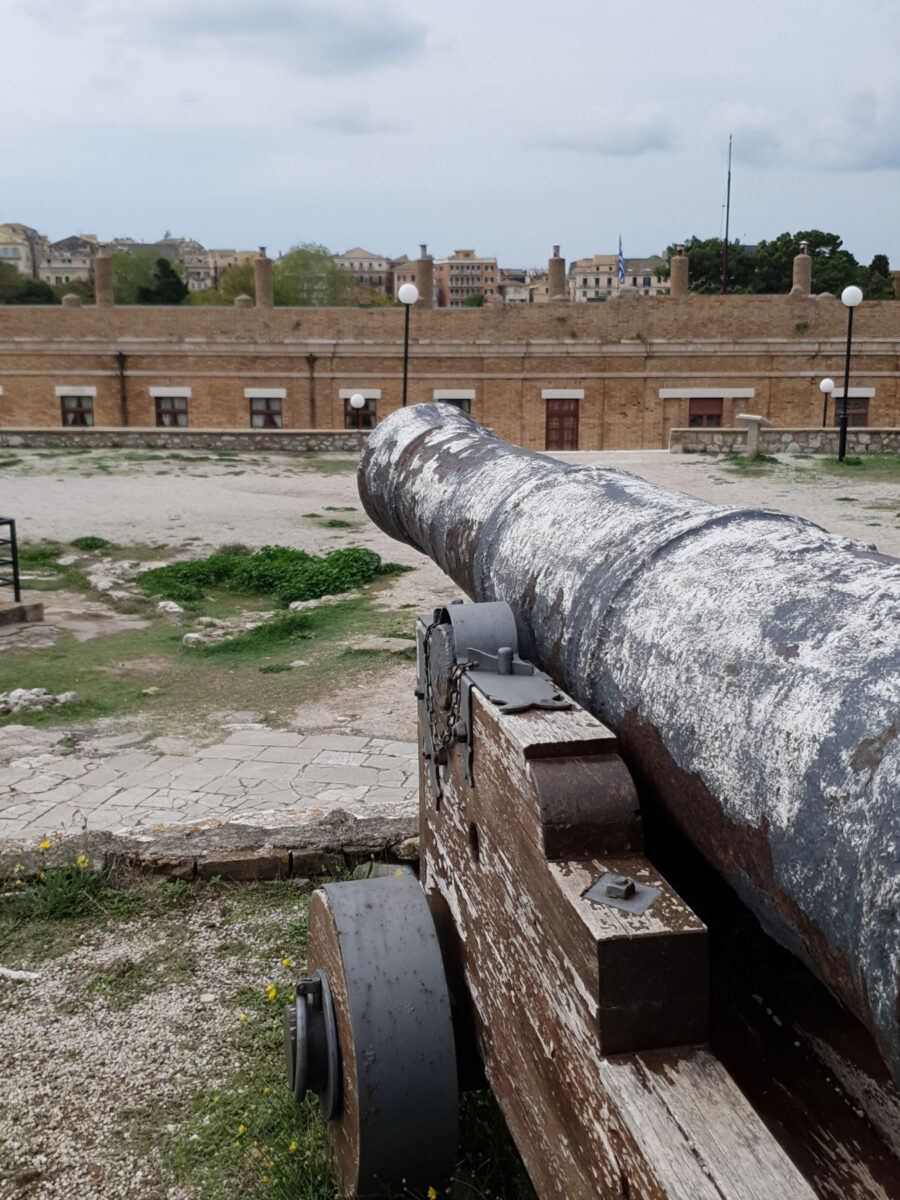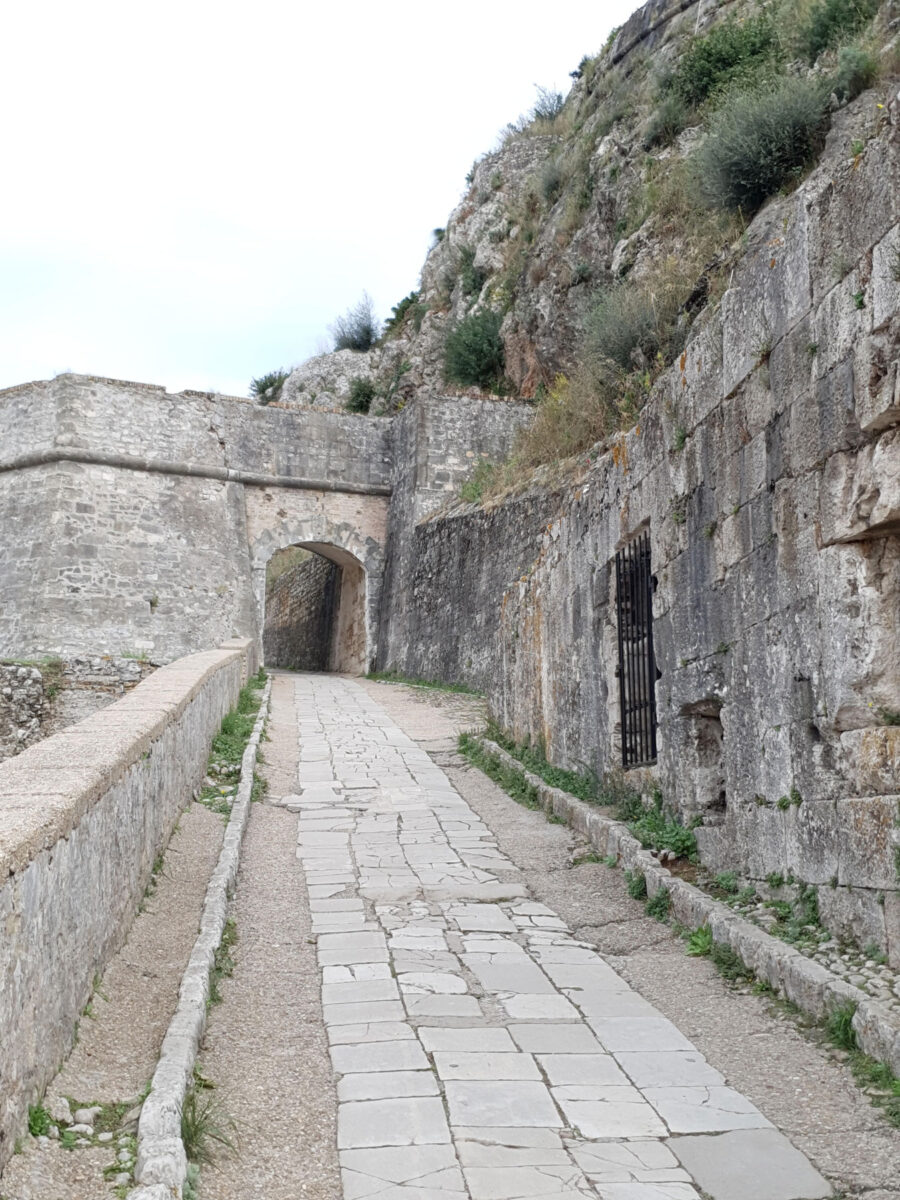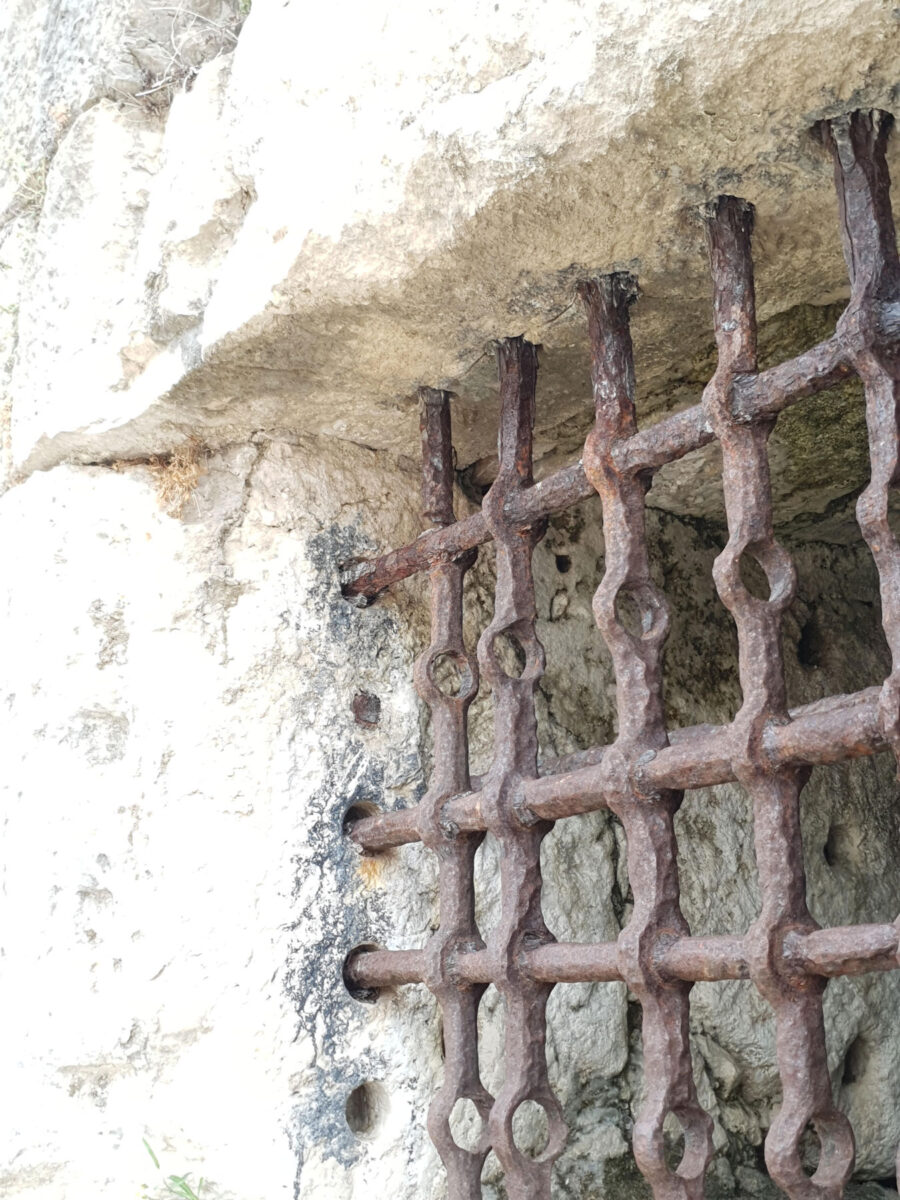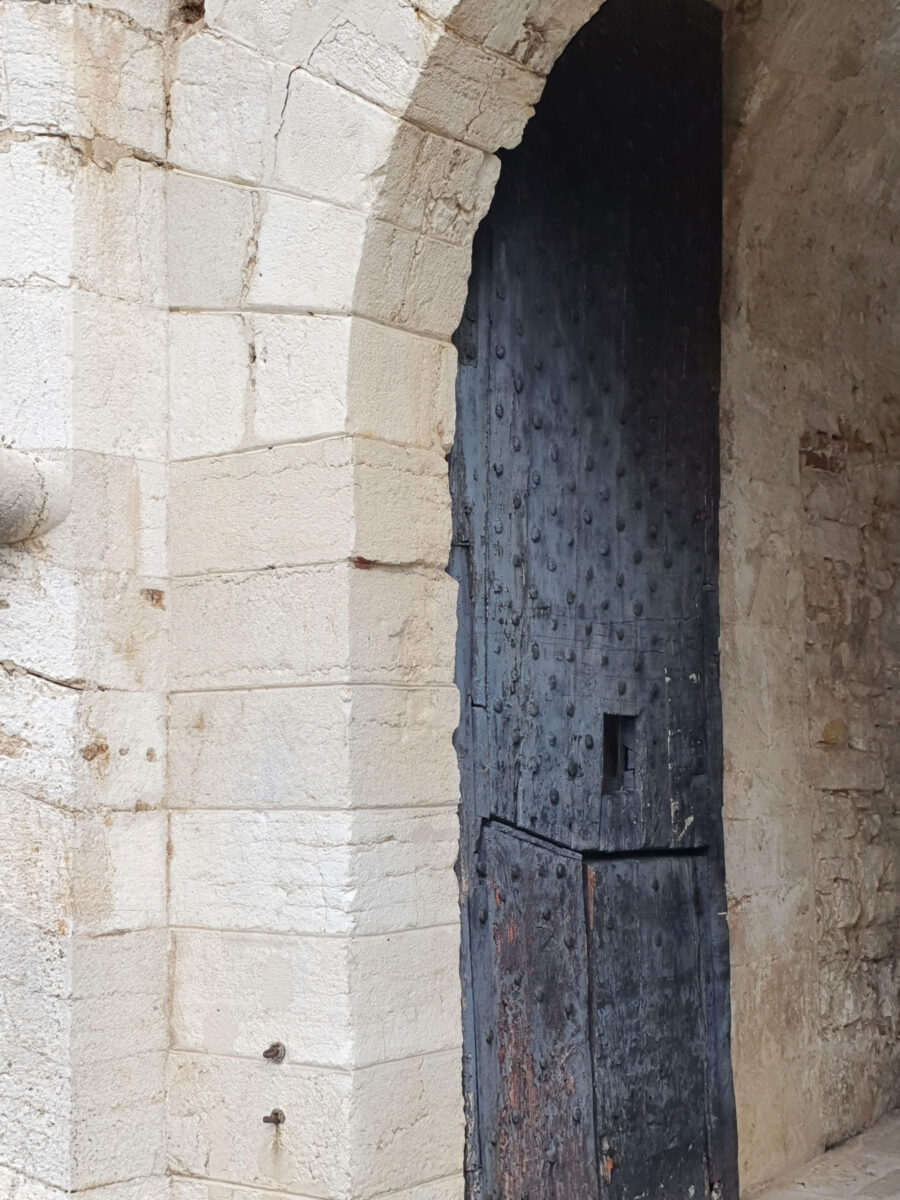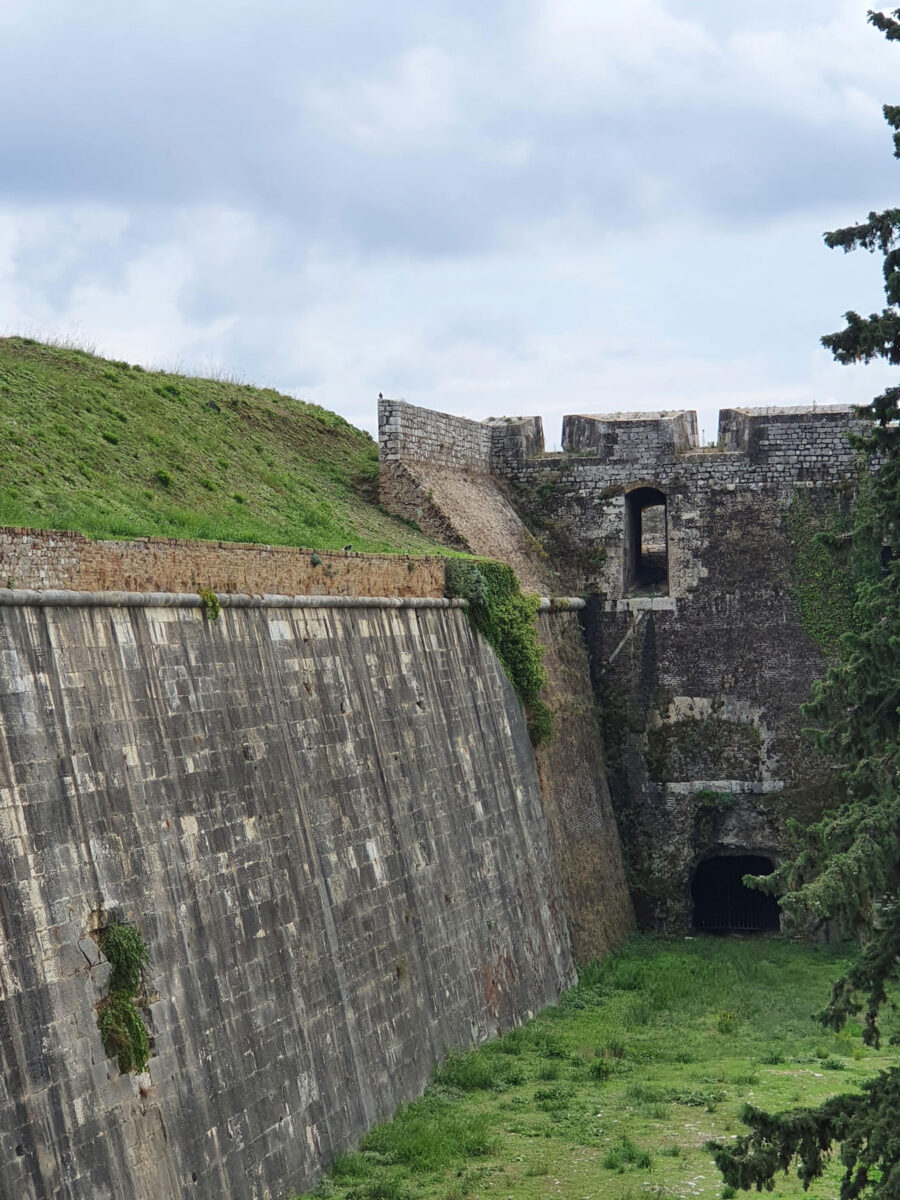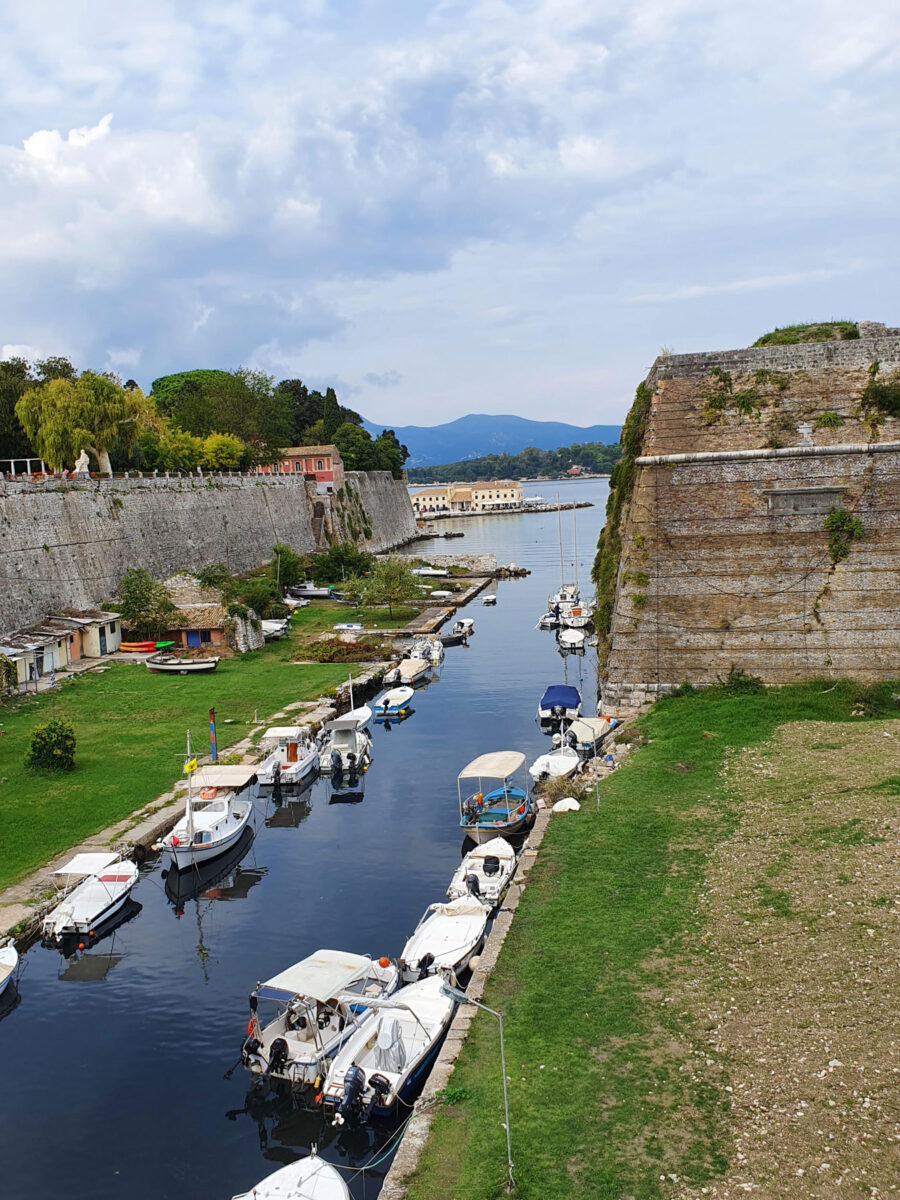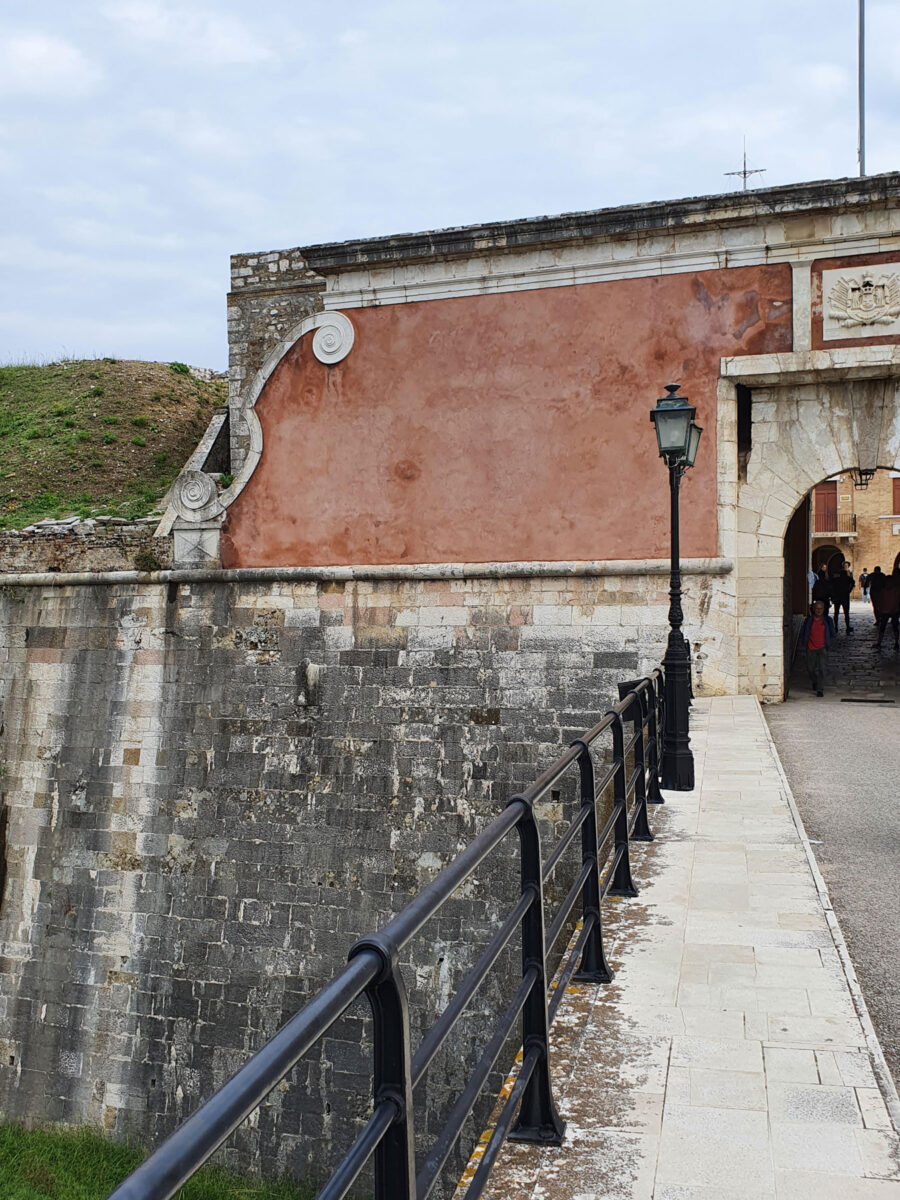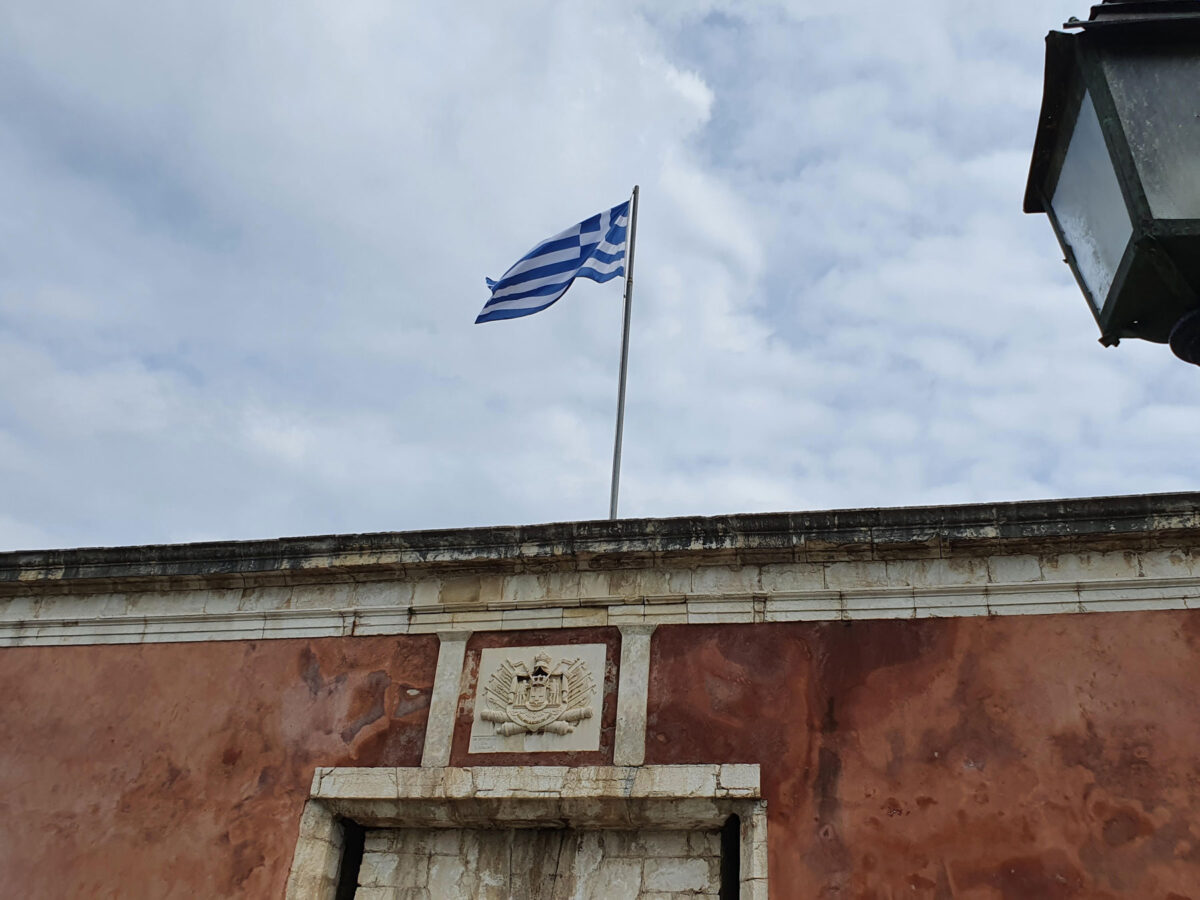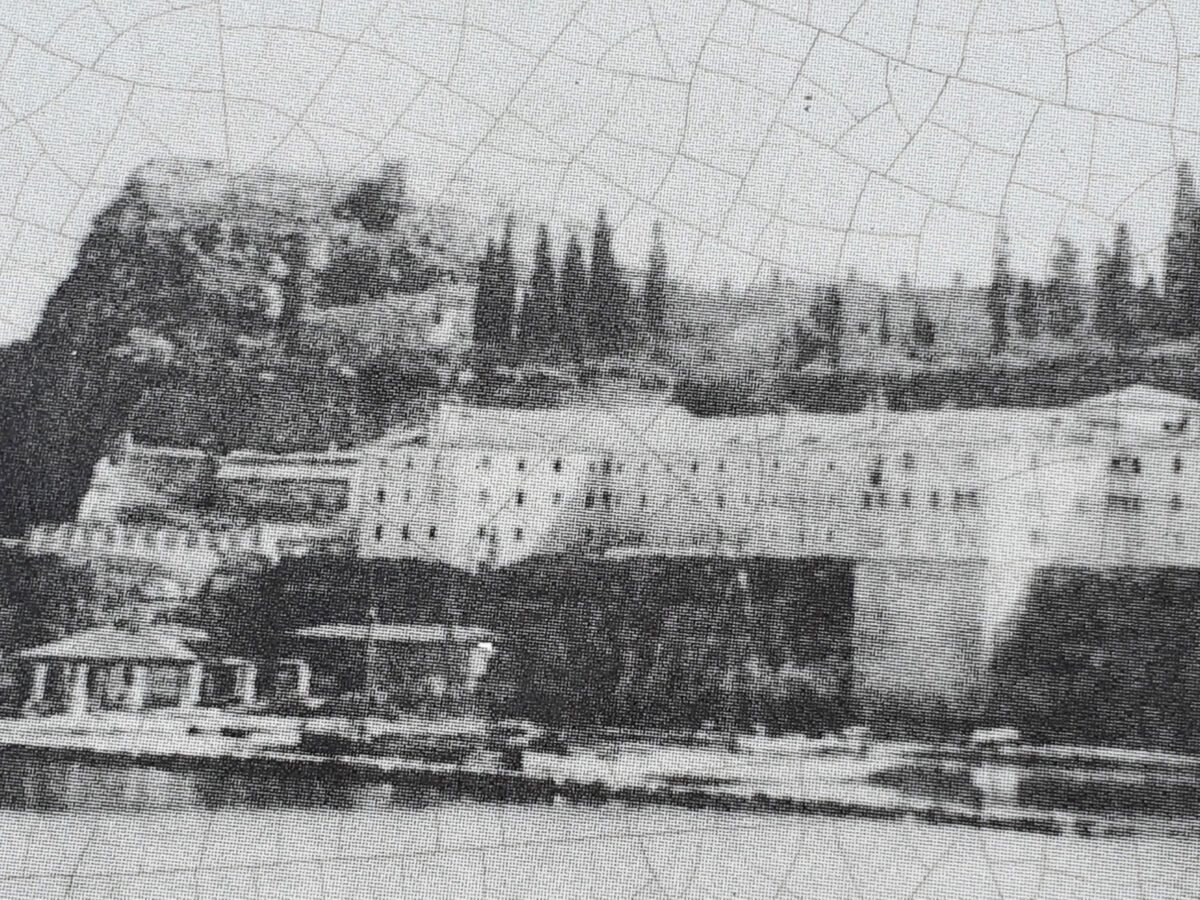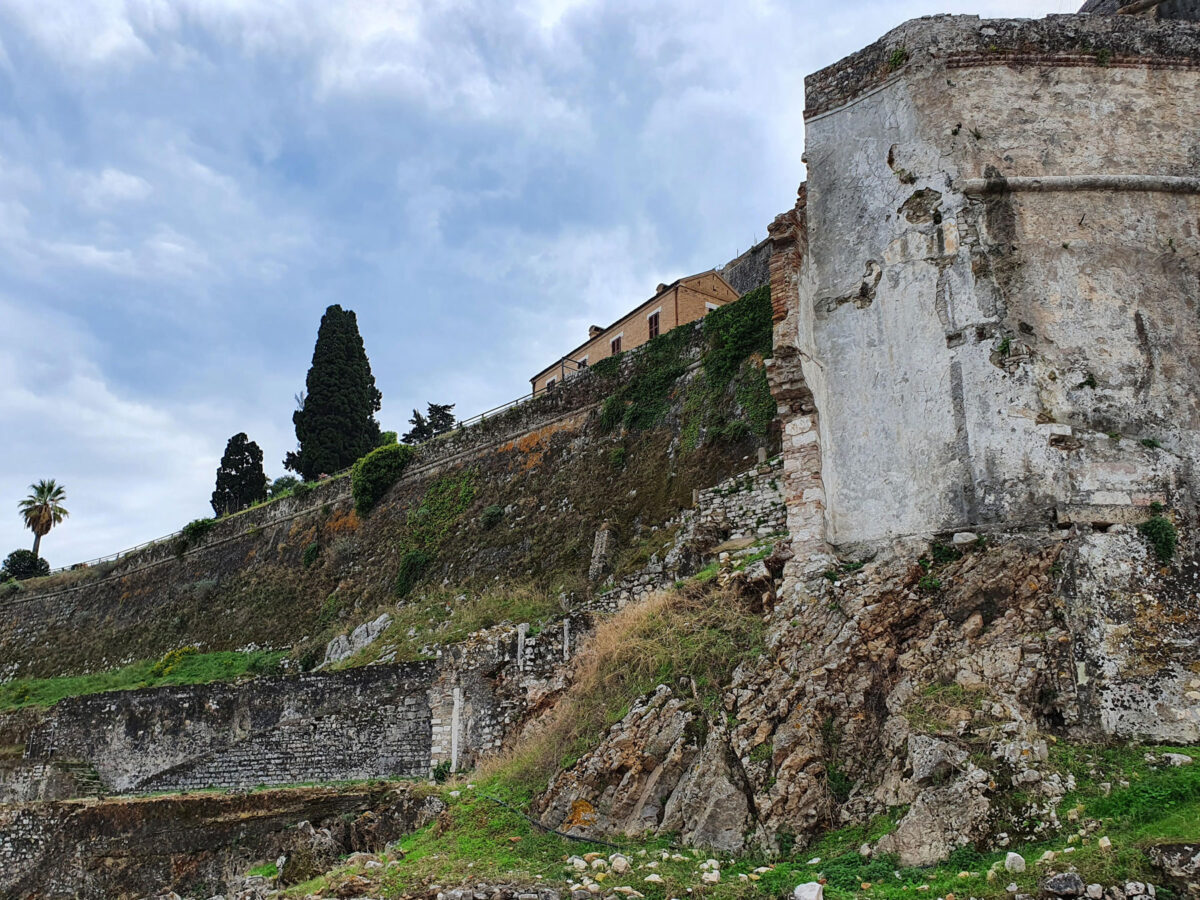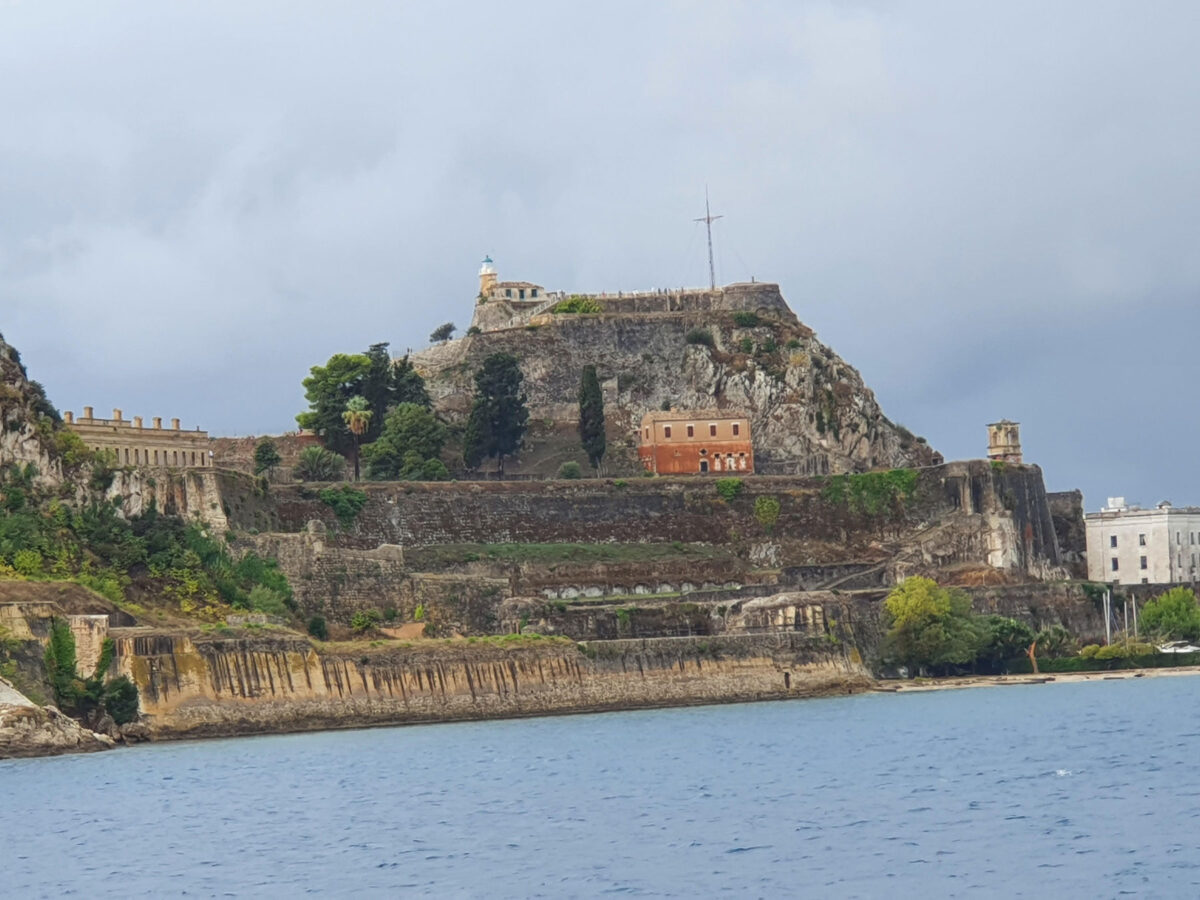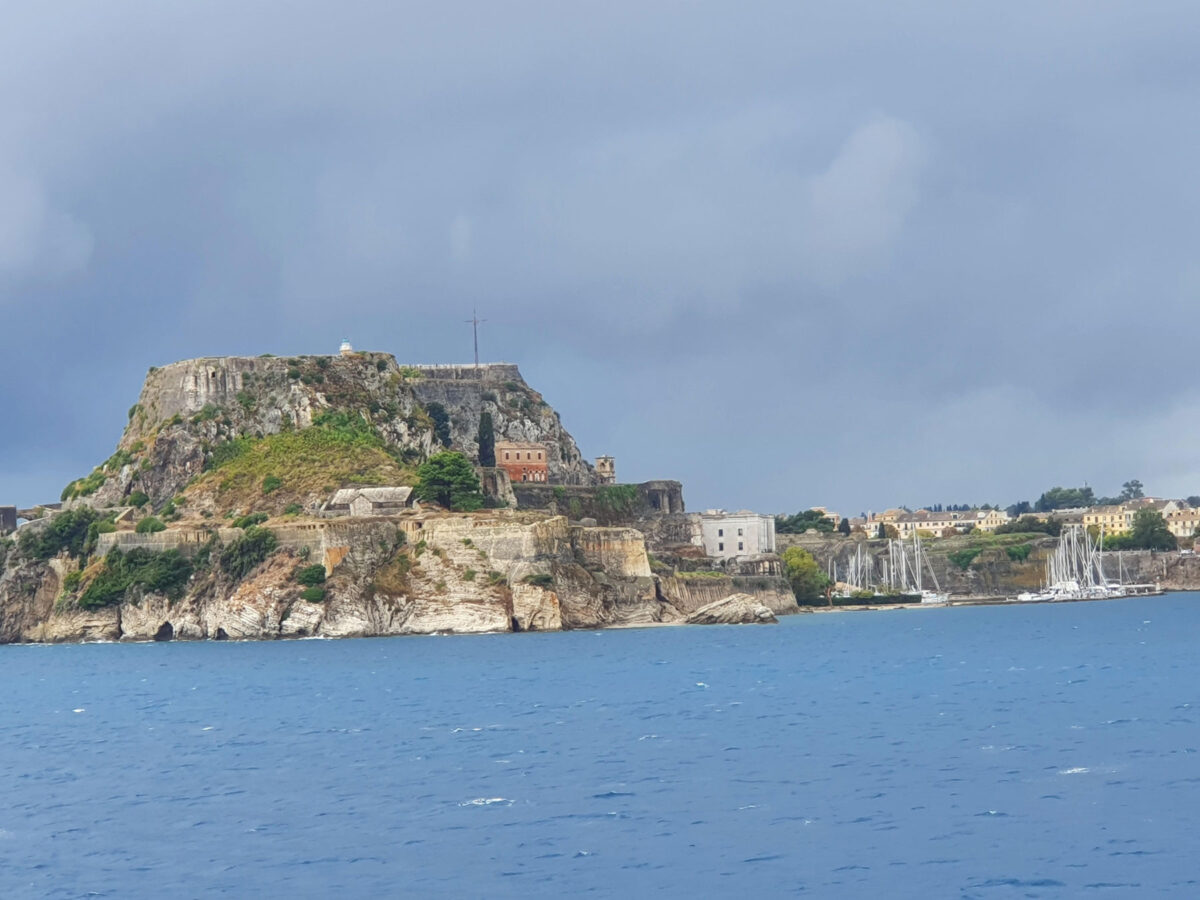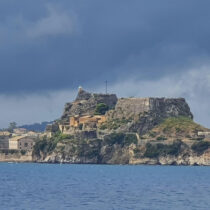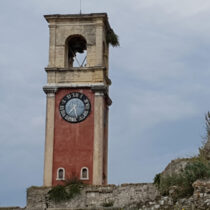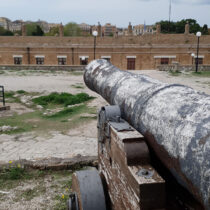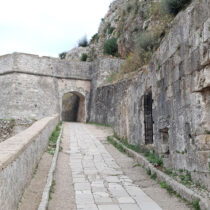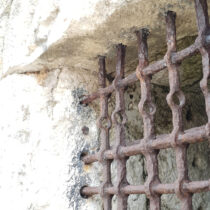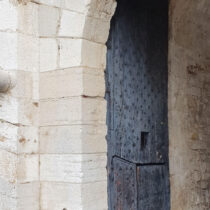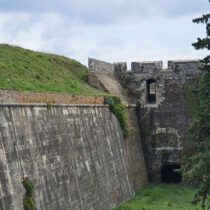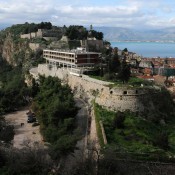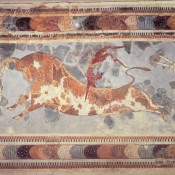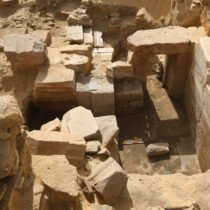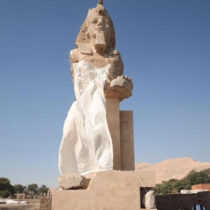Undoubtedly, it is the town’s most imposing monument, still visible from the beaches of Igoumenitsa and a magnet for tourists. We are of course referring to the Old Fortress of Corfu with its centuries-old history and its wonderful secrets.
It all began in the 6th century AD, when rescued from the Goths, the people of Paleopolis, the ancient city of Corfu, moved to the east end of the city, on a rocky peninsula with two hills; two “protector” peaks of the island. Hence the name Corfu or Korifos, as many historians believe. In the 10th century it became a residential “nucleus” and acquired the title of “Metropolis”, while it took on the form of a fortified stronghold in Byzantine times by the emperors of that era. Interventions were made by the Despots of Epirus and the Angevins, princes of Southern Italy.
With the second arrival of the Venetians in Corfu in 1386, the current form of the Old Fortress was determined. Fortifications were added and it now became a strategic point in the island’s protection from invaders from East and West. The Fortress was transformed from a peninsula to an island surrounded by a wet moat. Communications with the mainland was initially made via a wooden bridge. The high square Byzantine towers of the walls became circular, lower and smooth to prevent their being scaled.
Corfu fortified itself against the Ottoman raids, while the fortress was subjected to interventions of military architecture by the best architects of the time. Its three circular towers were replaced by two pentagonal bastions and the wet moat was widened. The wooden bridge was replaced by a solid stone one. Military facilities were built in the fortress that included warehouses of military equipment, a hospital, prisons, bell towers, and also churches. The fortress became impregnable and withstood all Ottoman sieges. After the Venetians, the Old Fortress was used by the French and later by the island’s English rulers. Corfu was “liberated” and returned to its people when the Ionian Islands became part of Greece in 1864.
At the entrance of the Old Fortress stands the imposing statue of Marshal von Schulenburg, made by the Venetians to commemorate the expulsion of the Turks from the island. Crossing the towering stone bridge, the Old Fortress, visible from Spianada Square, the largest in the Balkans, looks like something straight out of a fairy tale. The stone bridge that connects the peninsula to the fortress is awe-inspiring. Boats in the wet moat attest to times having changed, while the Fortress’ wide four-meter wooden doors at its main entrance makes one shiver.
There must be so many secrets hidden behind those heavy doors!
Entering the Byzantine Collection of Corfu the culture of its people becomes apparent captured in unique mosaics. The Latin Chapel of Our Lady of the Carmelites , built at the beginning of the 17th century, attests to the warm faith of the Venetians, while in 1994 it hosted the EU Summit held on the island.
Byzantines, Venetians, English and today’s Europeans have all passed through the Fortress that could be described as a “mosaic” of cultures reflected in its preserved buildings; in the old Venetian prison, the military chapel, the English military hospital which today houses the Department of Music of the Ionian University, St. George’s Church (built by the English in 1840), the Clock Tower built at the end of the 18th century. The Venetian well at the foot of the fortress has today been turned into a wishing well by visitors. Hundreds of coins and even paper money can be seen in it, thrown by people making their own wish inside the impregnable fortress, telling their own secrets.
Climbing the stone steps to reach the top of the Great Lighthouse, you hear the echo of whispers from closed halls, and holds… The “bombardas”, Venetian cannons of 1684 that face the Ionian sea and once made a thunderous sound , are sights of another terrible era of corsairs and pirates.
To reach Mantraki at the foot of the Old Fortress, you follow the sound of the piano or the violin – all coming from the Music Department of the Ionian University which has found its home inside the old Venetian hospital. Descending to the northeast by the stone stairs, you find yourself in Mantraki, once a military port with frigates, today full of sailboats and yachts that berth at the feet of the fortress safe from all weathers. One of the oldest sailing schools in Corfu operates there today.
The Old Fortress of Corfu is accessible all year round. As the head of the Ephorate of Antiquities of Corfu Tenia Rigakou told the Athens and Macedonia News Agency/AMNA: “There were more than 200,000 visitors to the Old Fortress this year, while there is now great interest in the island’s new fortress, also known as the fortress of Agios Markos, built by the Venetians for the defense of the city and its suburbs”.
There is no doubt that for centuries now the Old Fortress of Corfu has been providing us with stories of the island, its conquerors, the people who loved it, envied it, tried to rule it and all those who visit it to leave their own mark; to take a “selfie” back home and keep alive the memories of all they saw, heard and “felt” when passing through the Old Fortress.
